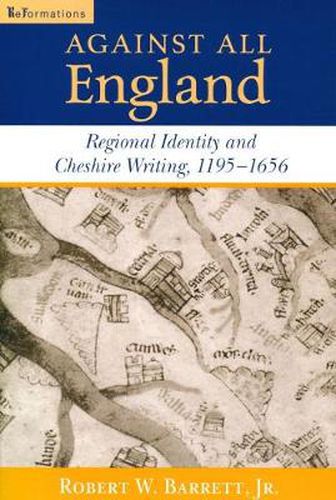Readings Newsletter
Become a Readings Member to make your shopping experience even easier.
Sign in or sign up for free!
You’re not far away from qualifying for FREE standard shipping within Australia
You’ve qualified for FREE standard shipping within Australia
The cart is loading…






Against All England examines a diverse set of poems, plays, and chronicles produced in Cheshire and its vicinity from the 1190s to the 1650s that collectively argue for the localization of British literary history. These works, including very early monastic writing emanating from St. Werburgh’s Abbey, the Chester Whitsun plays, Sir Gawain and the Green Knight, seventeenth-century ceremonials, and various Stanley romances, share in the creation and revision of England’s cultural tradition, demonstrating a vested interest in the intersection of landscape, language, and politics. Barrett’s book grounds itself in Cestrian evidence in order to offer scholars a new, dynamic model of cultural topography, one that acknowledges the complex interlacing of regional and national identities within the longue duree extending from the post-Conquest period to the Restoration. Covering nearly five centuries of literary production within a single geographical location, the book challenges still dominant chronologies of literary history that emphasize cultural rupture and view the Renaissance as a sharp break from England’s medieval past.
$9.00 standard shipping within Australia
FREE standard shipping within Australia for orders over $100.00
Express & International shipping calculated at checkout
Against All England examines a diverse set of poems, plays, and chronicles produced in Cheshire and its vicinity from the 1190s to the 1650s that collectively argue for the localization of British literary history. These works, including very early monastic writing emanating from St. Werburgh’s Abbey, the Chester Whitsun plays, Sir Gawain and the Green Knight, seventeenth-century ceremonials, and various Stanley romances, share in the creation and revision of England’s cultural tradition, demonstrating a vested interest in the intersection of landscape, language, and politics. Barrett’s book grounds itself in Cestrian evidence in order to offer scholars a new, dynamic model of cultural topography, one that acknowledges the complex interlacing of regional and national identities within the longue duree extending from the post-Conquest period to the Restoration. Covering nearly five centuries of literary production within a single geographical location, the book challenges still dominant chronologies of literary history that emphasize cultural rupture and view the Renaissance as a sharp break from England’s medieval past.